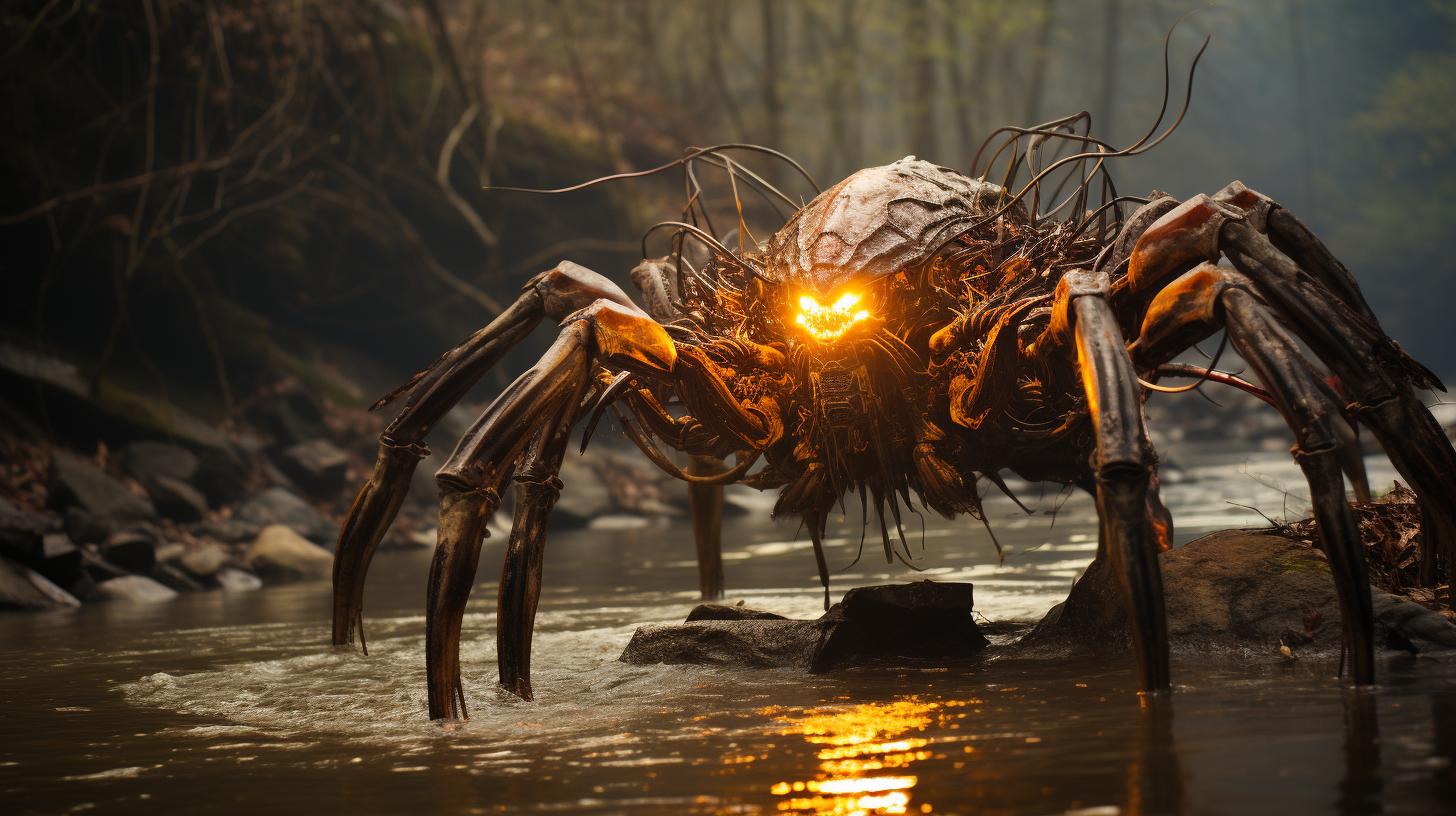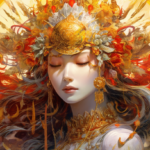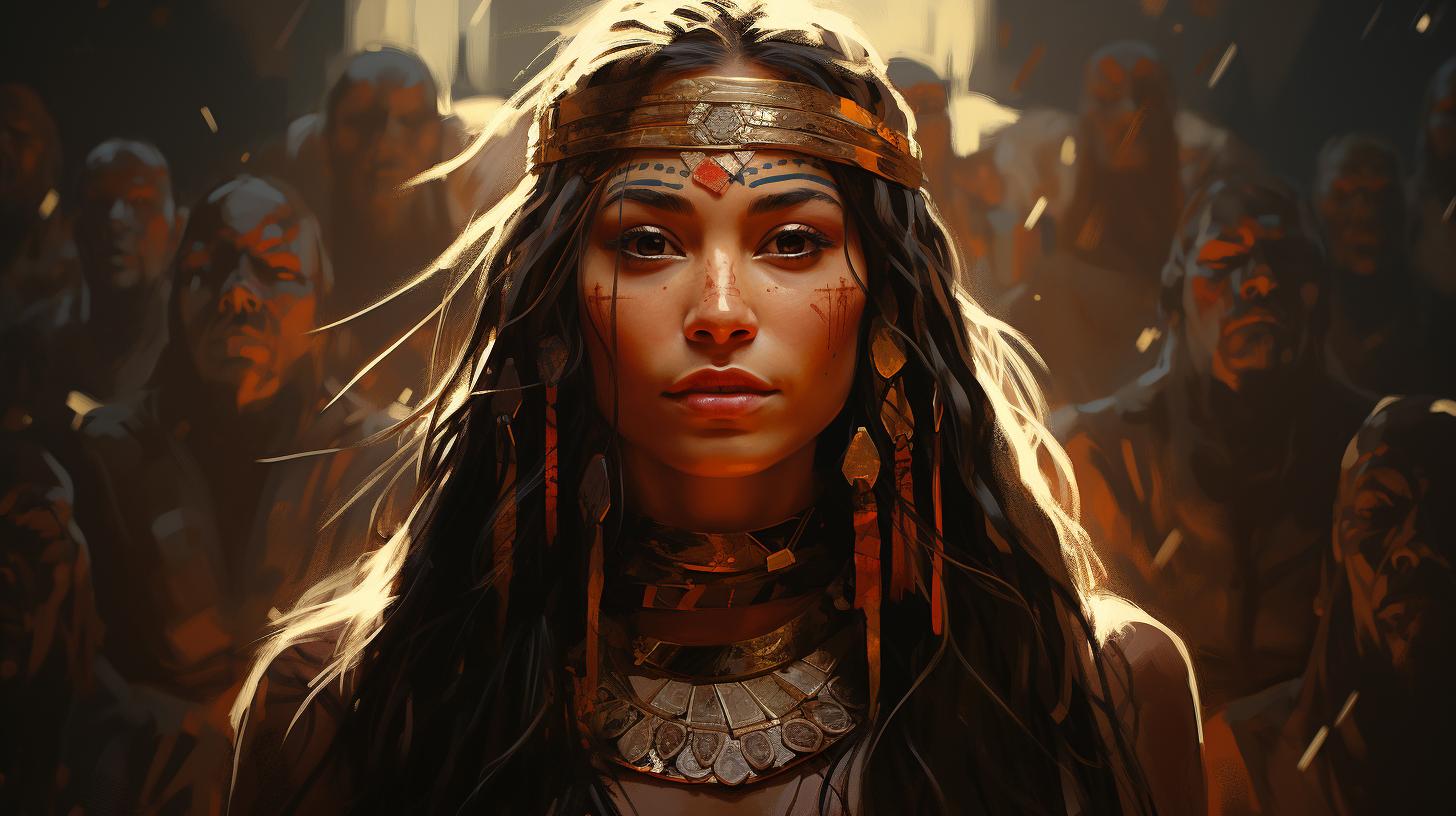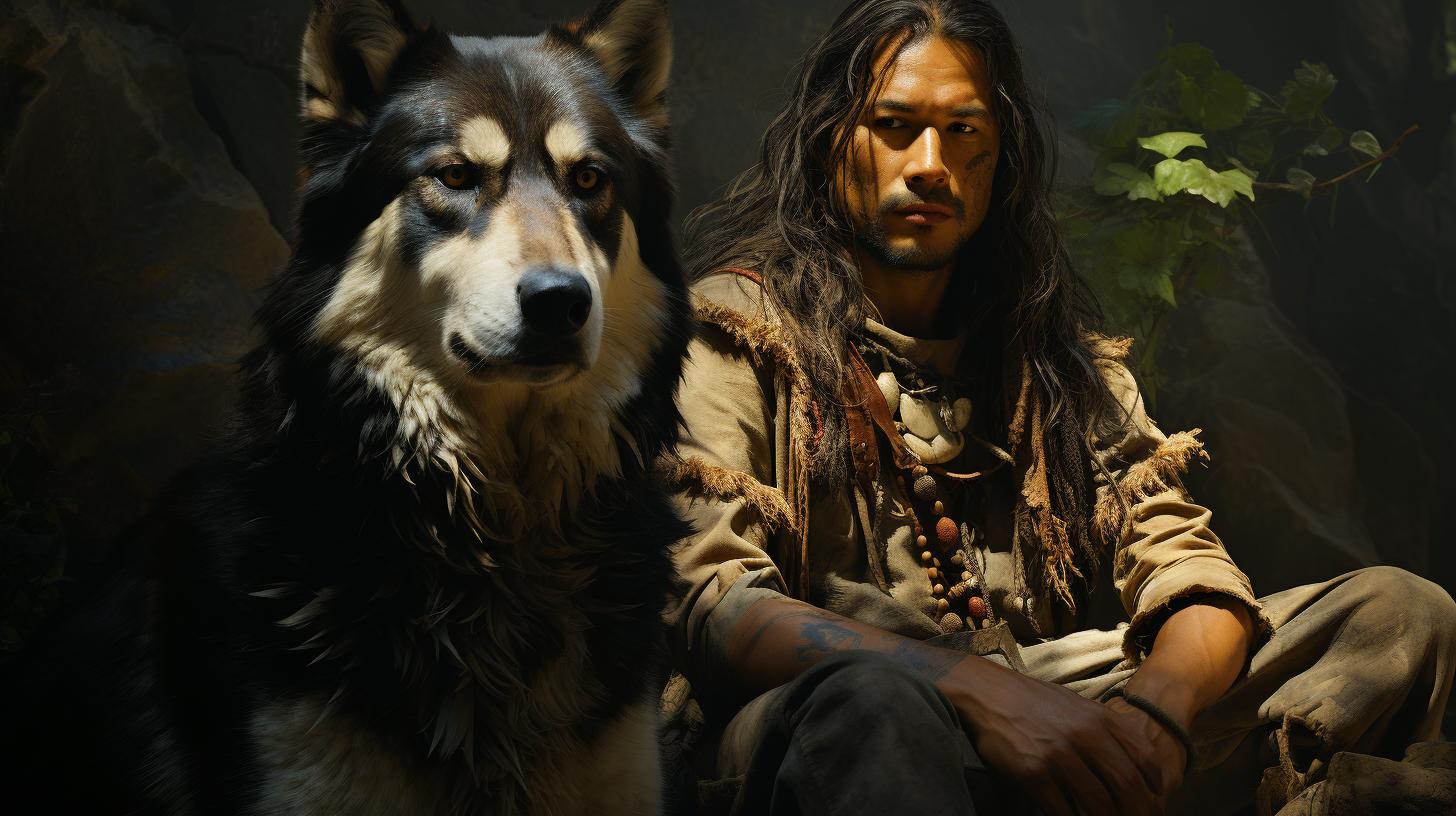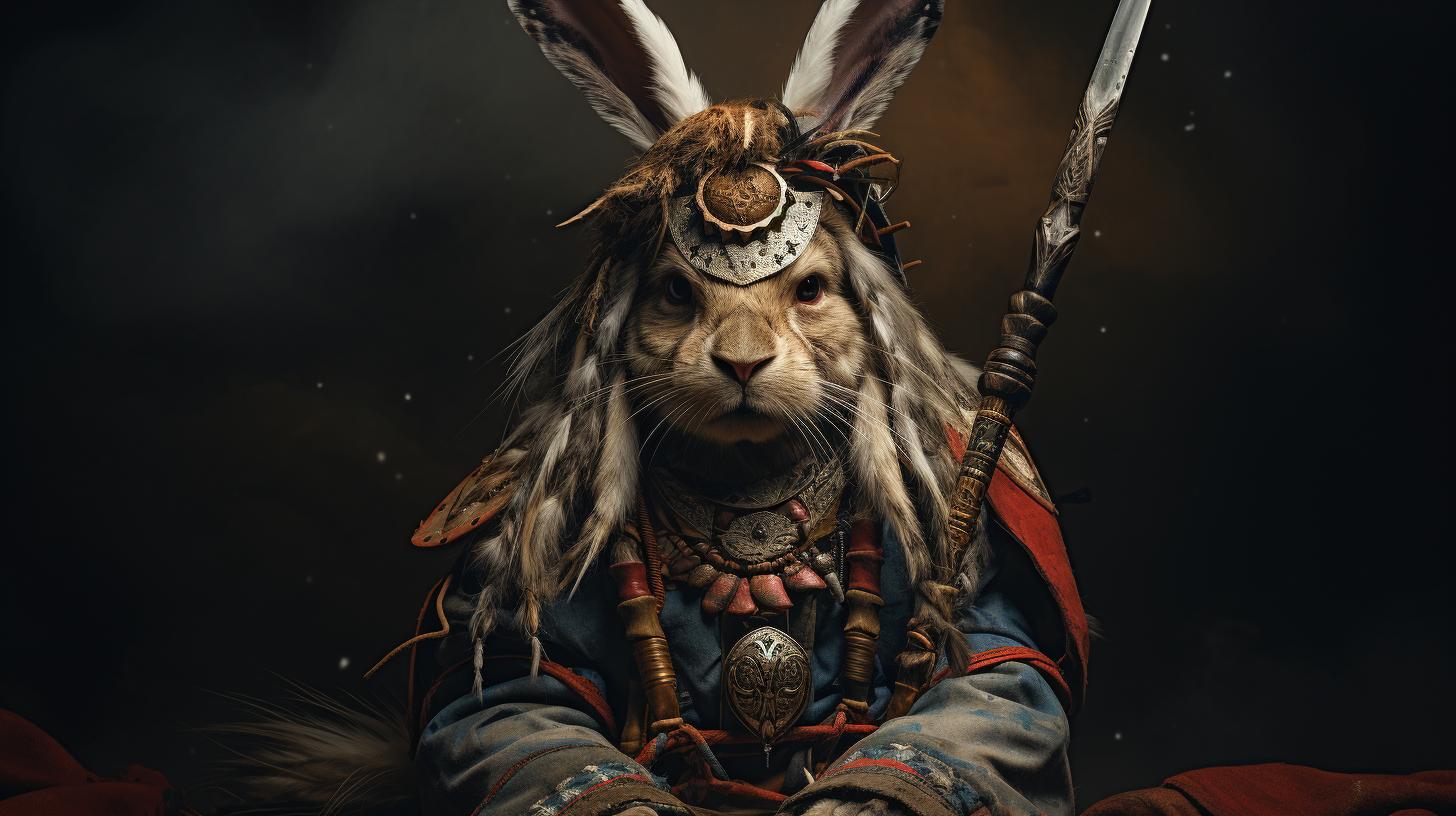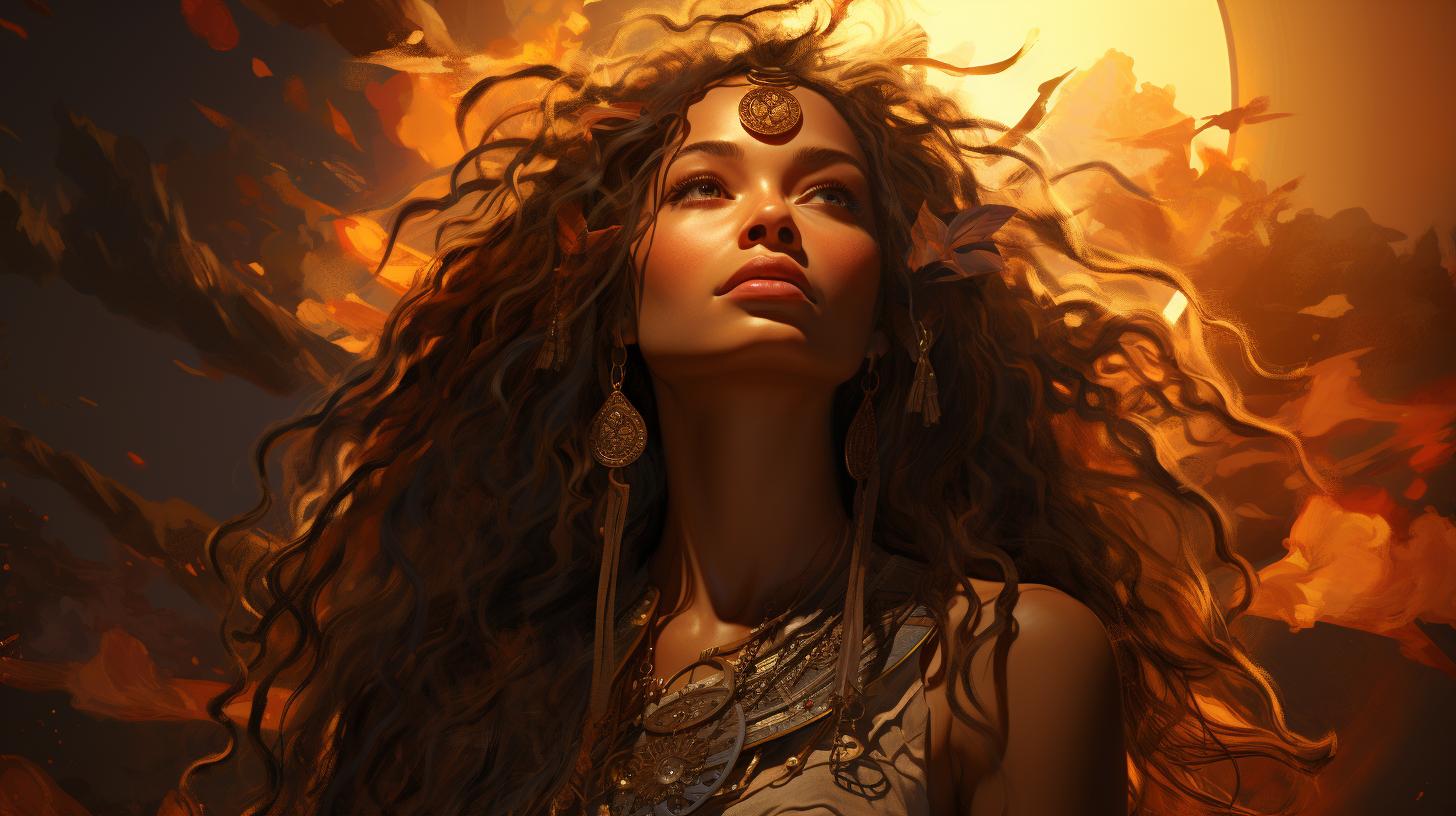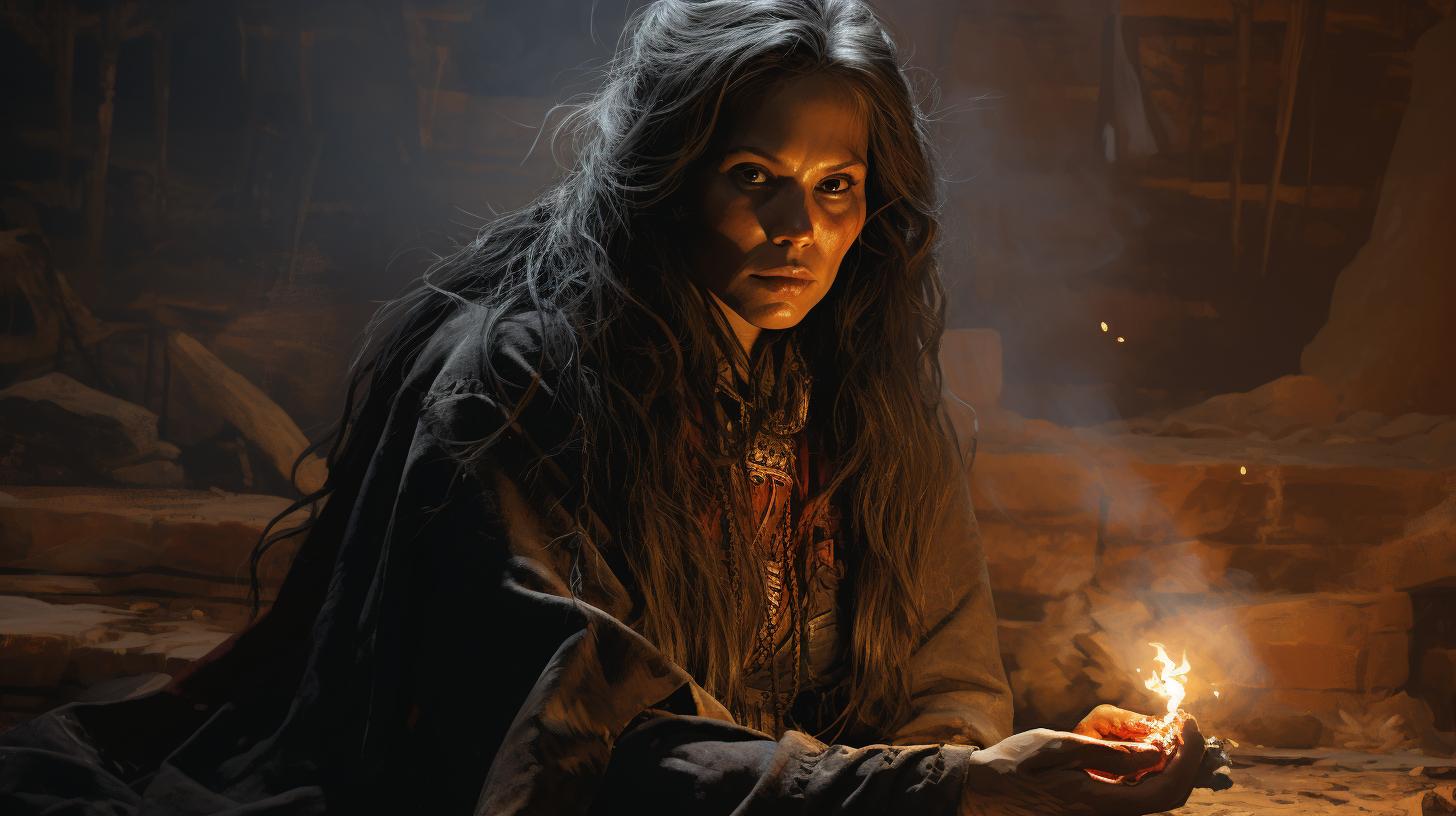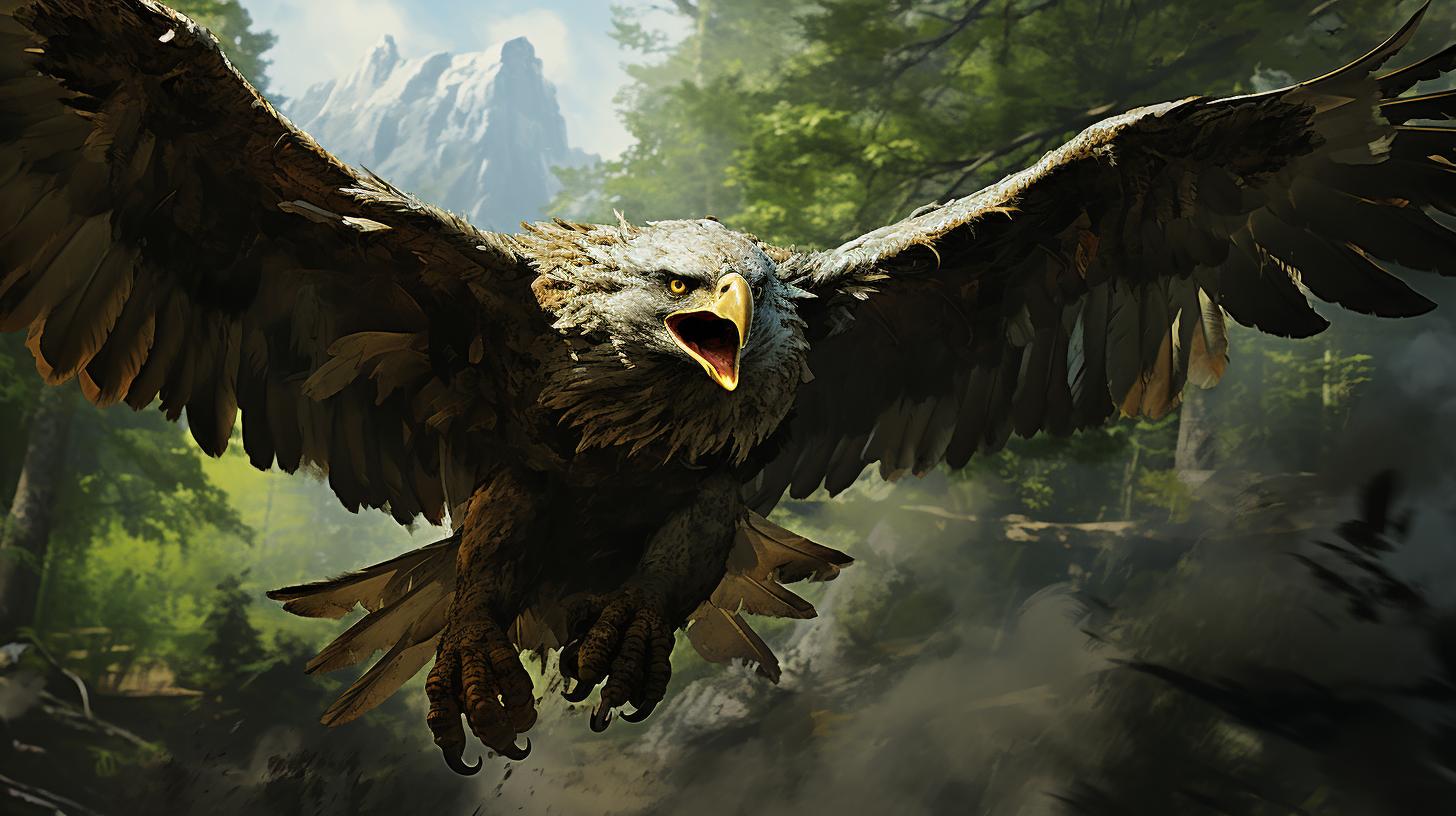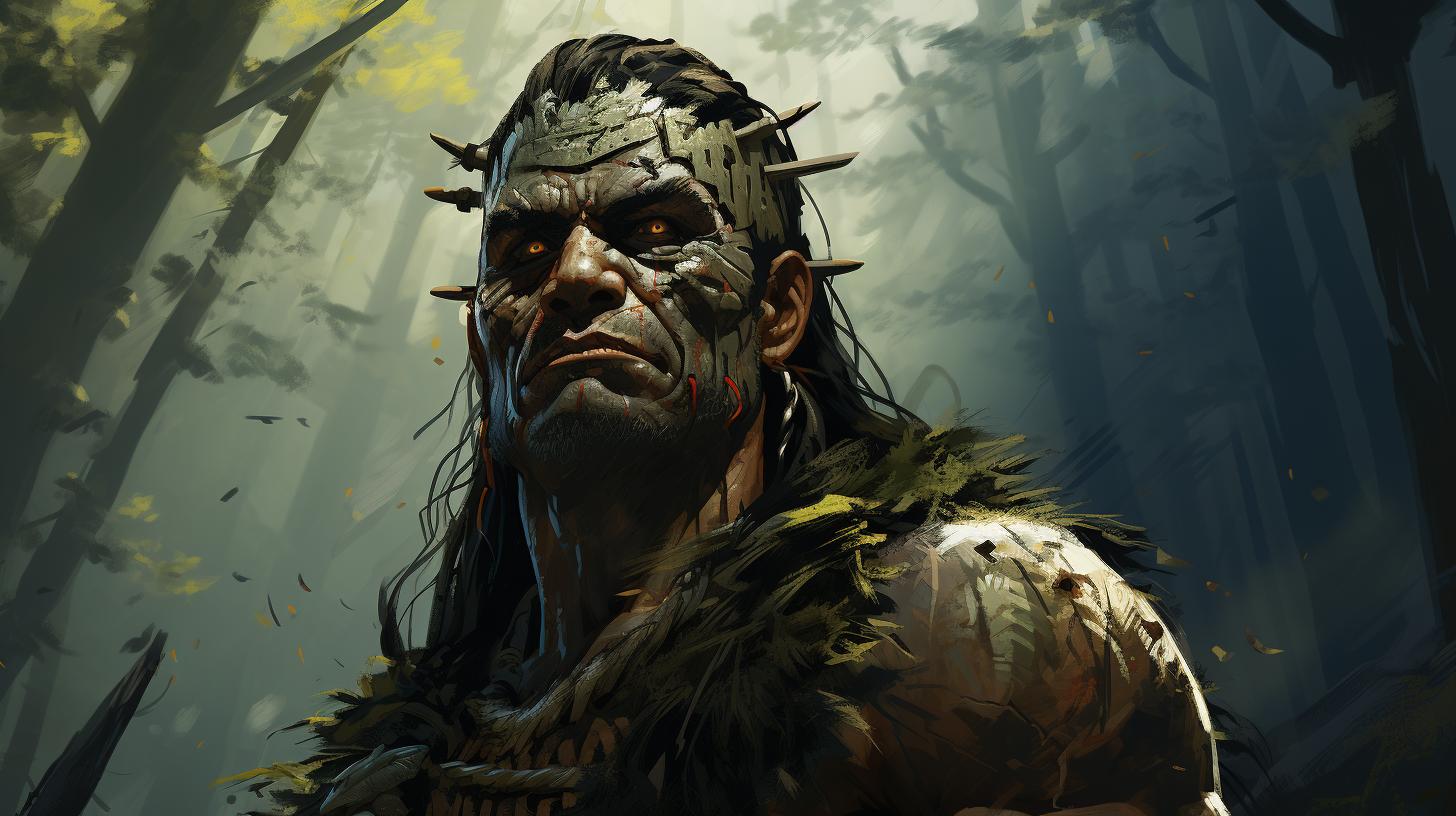Discover the Mysteries of the Cherokee Water Spider
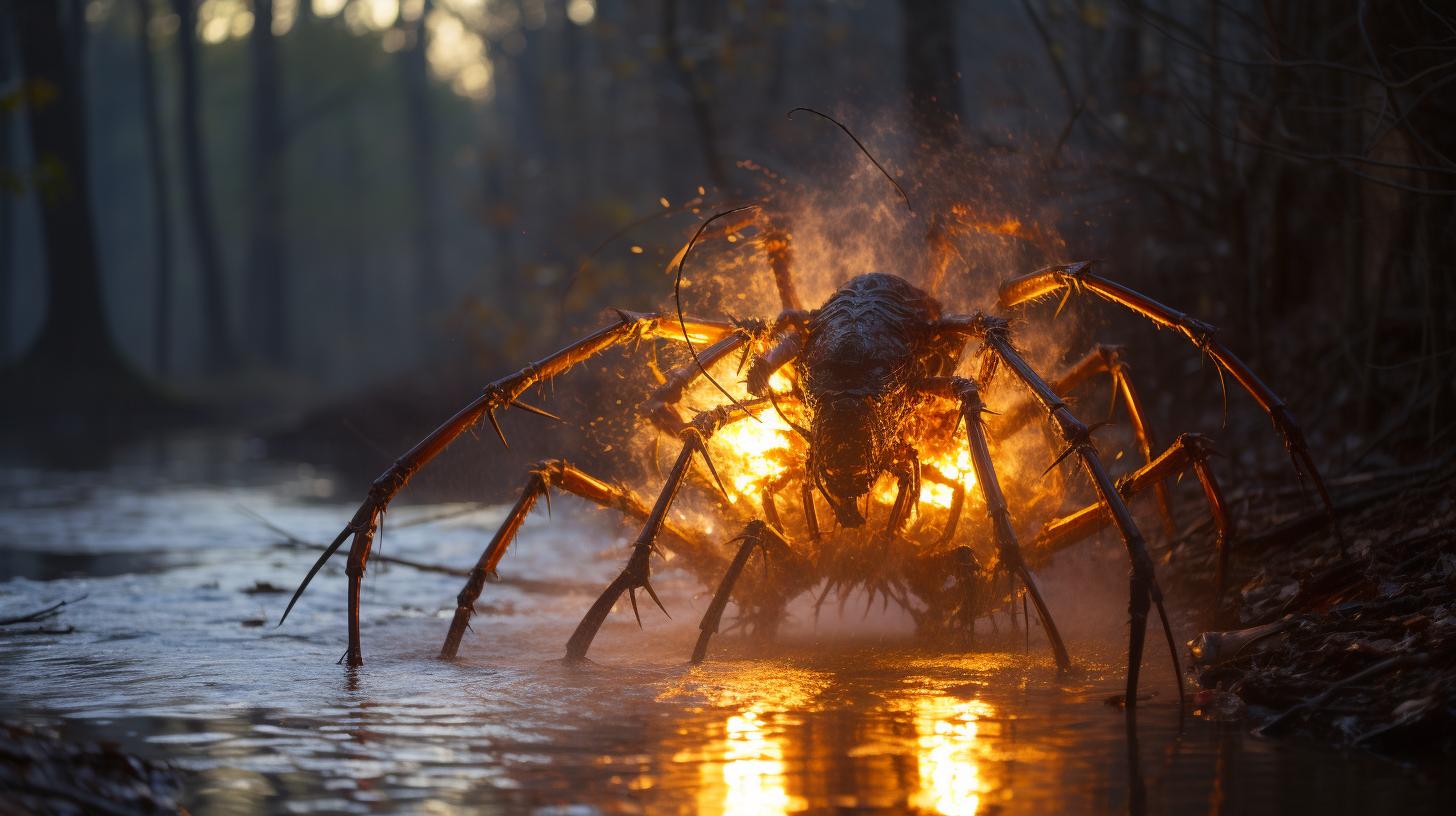
The Cherokee Water Spider holds a significant place in Cherokee mythology and spiritual beliefs. This elusive creature is revered for its role in creation stories and its symbolism of resilience.
Exploring its legends, the diverse pantheon of Cherokee gods, and the deep connection between nature and spirituality, this article dives into the rich cultural heritage of the Cherokee people. Discover the enduring influence of the Cherokee Water Spider on contemporary interpretations, artistic representations, and the preservation of indigenous traditions in modern society.
Cherokee Water Spider: Mythology and Spiritual Beliefs
The Cherokee Water Spider holds a significant place in Cherokee mythology, embodying themes of creation, resilience, and spiritual power. This section explores the importance of the Cherokee Water Spider within their mythological narratives and its connections to their spiritual beliefs and practices.
The Importance of Cherokee Water Spider in Mythology
In Cherokee mythology, the Water Spider is considered a divine being associated with the creation of the world and various natural elements. Its role in the origin stories of the Cherokee people highlights its prominence and significance in their cultural heritage.
Spiritual Beliefs and Practices Associated with Cherokee Water Spider
The Cherokee Water Spider is revered for its supernatural abilities and spiritual symbolism. Its presence is intertwined with concepts of resilience, adaptability, and protection. The Cherokee incorporate the Water Spider into their spiritual practices through rituals, ceremonies, and prayers, recognizing it as a guardian and guide.
Legends and Stories Involving Cherokee Water Spider
Within Cherokee folklore, numerous legends and stories feature the Water Spider as a key character. These tales often highlight the Spider’s cunning, wisdom, and role in shaping the natural world. Through these narratives, the Cherokee pass down ancestral wisdom and moral lessons, reinforcing their cultural identity.
Cherokee Gods and Deities
The Cherokee pantheon is rich and diverse, encompassing numerous gods and goddesses. These deities play significant roles in Cherokee mythology, culture, and spiritual beliefs.
Overview of Cherokee Pantheon
The Cherokee pantheon consists of a complex hierarchy of gods and goddesses, each with their own unique attributes and symbolism. These deities embody various aspects of nature, human experiences, and cosmic forces.
The pantheon reflects the interconnectedness between the spiritual and physical worlds in Cherokee belief system.
Major Gods and Goddesses in Cherokee Mythology
- Yowa: The supreme creator deity, responsible for the creation of the universe and all living beings.
- Amayi: The goddess of the sun, representing warmth, light, and growth.
- Unelanuhi: The goddess of the moon, associated with fertility, cycles, and healing.
- Kana’ti: The god of the hunt and game animals, revered for his ability to provide sustenance for the Cherokee people.
- Aganunitsi: The goddess of the earth, embodying fertility, abundance, and stability.
Roles and Attributes of Cherokee Gods and Goddesses
Cherokee gods and goddesses are not only responsible for creating and maintaining the natural world but also possess unique qualities and powers that influence human lives.
They serve as protectors, guides, and sources of wisdom, offering guidance, strength, and blessings to the Cherokee people.
For example, Yowa, the supreme creator deity, is revered as the ultimate source of life and knowledge.
Amayi and Unelanuhi, the sun and moon goddesses respectively, represent the harmony between light and darkness, day and night, and the cyclical nature of existence.
Each deity within the Cherokee pantheon holds a significant role in the spiritual and cultural practices of the Cherokee people, symbolizing different aspects of their worldview, values, and aspirations.
The Significance of Cherokee Mythology
The mythology of the Cherokee people holds immense importance in their cultural identity and understanding of the world. It encompasses a rich tapestry of stories, beliefs, and practices that have evolved over centuries, reflecting the origins and experiences of the Cherokee nation.
Origins and Evolution of Cherokee Mythology
Cherokee mythology traces its roots back to ancient times, embodying the collective wisdom and experiences of the Cherokee ancestors. Influenced by their interactions with the natural world, neighboring tribes, and historical events, the mythology has evolved and adapted over time.
The stories have been passed down through generations, capturing the essence of the Cherokee belief system and providing insights into their worldview, spirituality, and societal values.
Relationship Between Mythology and Cherokee Culture
Cherokee mythology is deeply intertwined with the cultural fabric of the Cherokee people.
It serves as a guiding force in shaping their customs, rituals, and social structures. The myths and legends embody the Cherokee’s connection to the land, their reverence for nature, and their understanding of the human condition.
This ancient belief system influences various aspects of Cherokee life, including family dynamics, community interactions, and the preservation of cultural heritage.
Impact of Cherokee Mythology on Modern Society
The enduring legacy of Cherokee mythology continues to reverberate in modern society, playing a vital role in the preservation and revitalization of Cherokee traditions. It serves as a source of inspiration for artists, writers, and performers who seek to honor and celebrate Cherokee cultural heritage.
Moreover, the mythology fosters a sense of identity and pride among Cherokee individuals, strengthening their connection to their ancestral roots and fostering a deeper appreciation for their unique heritage. It also serves as a bridge for intergenerational knowledge transmission, ensuring that the wisdom and values embedded within the myths endure for future generations.
Cherokee Spiritual Beliefs and Practices
Cherokee spiritual beliefs and practices are deeply rooted in the connection between nature and spirituality. The core spiritual concepts in Cherokee tradition encompass harmony, balance, and a sense of interconnectedness with all living beings and the natural world.
Core Spiritual Concepts in Cherokee Tradition
In Cherokee tradition, every aspect of existence is believed to possess a divine spirit, including animals, plants, and elements. The concept of “Adelv unegv” emphasizes the importance of maintaining harmony and balance within oneself and with the environment.
This spiritual principle guides the Cherokee’s approach to life, relationships, and their respect for the natural world.
Rituals and Ceremonies in Cherokee Spiritual Practices
Cherokee spiritual practices involve various rituals and ceremonies that serve as a means of connecting with the spiritual realm. These ceremonies often include rituals such as purification, offerings, prayers, and traditional dances.
Sweat lodges, vision quests, and pipe ceremonies are examples of sacred rituals through which individuals seek guidance, healing, and spiritual growth.
Connection Between Nature and Cherokee Spirituality
Nature plays a central role in Cherokee spirituality, as it is seen as a profound source of wisdom, inspiration, and spiritual guidance. The Cherokee people believe that the natural world is inhabited by spirits and forces, and they view themselves as part of this interconnected web of life.
The land, rivers, mountains, and animals are all regarded as sacred beings, deserving of respect and reverence.
Cherokee spiritual practices are deeply ingrained in daily life, reflecting a profound appreciation for the natural world and a holistic understanding of existence.
By maintaining a harmonious relationship with nature, the Cherokee people seek spiritual fulfillment and a sense of oneness with the world around them.
Animals and Nature in Cherokee Beliefs
In Cherokee beliefs, animals hold a sacred place and serve as spiritual guides for individuals and the community. These revered creatures are seen as messengers from the spiritual realm, offering guidance, protection, and representing the interconnectedness of all living beings.
Animals as Sacred Beings and Spirit Guides
Cherokee culture views animals as sacred beings with their own unique qualities and wisdom. Each animal is believed to possess specific attributes that can be called upon for support and guidance.
The Cherokee people develop a deep spiritual connection with animals and believe that they can communicate with them through symbolism, dreams, and visions.
These animal spirit guides play a vital role in guiding individuals on their life paths, providing wisdom, and offering protection and healing.
Cherokee people often seek signs and messages from animal encounters to gain insights and make important decisions in various aspects of life.
Symbolism and Meaning of Animals in Cherokee Culture
Animals in Cherokee culture carry significant symbolism and meaning. For example, the eagle represents strength, courage, and spiritual connection, while the bear is associated with power, healing, and transformation. The turtle symbolizes longevity, wisdom, and protection, and the deer represents gentleness, kindness, and harmony.
These animal symbols are woven into Cherokee art, crafts, and storytelling, reflecting the values and beliefs of the community. They serve as reminders of the deep connection between humans and the natural world, emphasizing the importance of respecting and nurturing the environment.
Relationship Between Humans and the Natural World in Cherokee Tradition
In Cherokee tradition, humans are considered equal participants in the intricate web of life, where all elements of nature are interconnected. The well-being of the natural world directly affects the harmony and prosperity of humanity.
Cherokee people cultivate a deep reverence for the Earth, recognizing their responsibility as caretakers and stewards of the environment.
Through ceremonies, rituals, and daily practices, Cherokee individuals seek to maintain a harmonious relationship with nature.
They express gratitude for the abundance provided by the land and honor the spirits of animals, plants, rivers, and mountains. This bond between humans and the natural world reflects a profound respect for the Earth’s wisdom and the interdependence of all living beings.
- Animals serve as sacred beings and spiritual guides, offering guidance and protection.
- Each animal possesses unique qualities and wisdom that can be called upon for support.
- Animal encounters provide signs and messages that guide important decisions.
- Animals hold symbolic meanings in Cherokee culture, representing various virtues and qualities.
- Cherokee art, crafts, and storytelling incorporate animal symbolism.
- The relationship between humans and the natural world is based on interconnectedness and mutual respect.
- Cherokee people practice gratitude and perform ceremonies to honor the Earth and its inhabitants.
Exploring Cherokee Water Spider in Contemporary Context
Cherokee Water Spider continues to hold significant importance in modern times, as it plays a vital role in the revival of Cherokee traditional practices.
The Revival of Cherokee Traditional Practices
Many Cherokee communities are actively working towards revitalizing their traditional practices, including ceremonies, rituals, and spiritual beliefs associated with the Cherokee Water Spider. Efforts are being made to preserve and pass down these practices to future generations.
Preservation and Promotion of Cherokee Cultural Heritage
Organizations and institutions dedicated to preserving Cherokee culture are actively involved in promoting the rich heritage of the Cherokee Water Spider. They organize events, workshops, and educational programs to raise awareness and appreciation for this important aspect of Cherokee traditions.
Cherokee Water Spider as a Symbol of Resilience and Cultural Identity
The Cherokee Water Spider embodies resilience and represents the unwavering cultural identity of the Cherokee people. Its symbolism permeates various forms of artistic expression, including visual arts, music, and storytelling, giving voice to the collective strength and endurance of the Cherokee community.
Through promoting the significance of the Cherokee Water Spider, the Cherokee people aim to strengthen their cultural identity and ensure the continued existence of their traditions in the face of societal changes.
Myths and Legends of Cherokee Water Spider
The rich mythology of the Cherokee Water Spider is filled with captivating stories and symbolic meanings. These myths and legends provide insight into the creation story, transformations, and profound moral lessons associated with the revered Water Spider.
The Creation Story Involving Cherokee Water Spider
The creation story of the Cherokee Water Spider is a tale of immense significance and wonder. According to legend, the Water Spider played a vital role in the birth of the world as we know it.
It was believed that the Water Spider wove intricate webs that connected the physical and spiritual realms, facilitating the creation of life. The story highlights the symbiotic relationship between the Water Spider and the natural elements, underscoring its role as a divine being.
Transformation and Symbolism in Cherokee Water Spider Myths
Cherokee Water Spider myths often explore themes of transformation and metamorphosis. The Water Spider is frequently portrayed as a symbol of adaptability and resilience, capable of navigating various environments and challenges.
These myths emphasize the transformative power of the Water Spider’s actions, serving as a metaphor for personal growth, overcoming obstacles, and embracing change.
Symbolically, the Water Spider represents the interconnectedness of all life and the delicate balance of the natural world.
Its ability to move effortlessly between land and water signifies harmony and the need to maintain equilibrium in one’s life. The Water Spider serves as a reminder of the profound wisdom that can be derived from observing and understanding the intricacies of nature.
Lessons and Moral Values in Cherokee Water Spider Tales
Cherokee Water Spider tales are replete with valuable life lessons and moral values. These stories often convey teachings about the importance of cooperation, resourcefulness, and adaptability. Through the adventures and trials of the Water Spider, individuals are encouraged to persevere, embrace their strengths, and face challenges with courage and wisdom.
Furthermore, Cherokee Water Spider tales emphasize the significance of interconnectedness and responsibility towards others and the natural world. They promote environmental stewardship, respect for all living beings, and the understanding that every action has consequences.
These tales provide a moral compass for individuals to navigate through life with integrity, empathy, and a deep appreciation for the interconnectedness of all creation.
As we explore the myths and legends surrounding the Cherokee Water Spider, we gain a deeper understanding of its importance in Cherokee culture.
These captivating tales of creation, transformation, and moral guidance have endured through generations, continuing to inspire and resonate with individuals today.
Contemporary Interpretations and Representations of Cherokee Water Spider
As the legacy of the Cherokee Water Spider continues to captivate and inspire, diverse artistic depictions have emerged that pay homage to this cherished mythological figure. Artists have portrayed the Water Spider in various mediums, including paintings, sculptures, and jewelry.
These artworks often showcase the spider’s intricate web-weaving abilities, emphasizing its role as a symbol of creativity and adaptability.
Artistic Depictions of Cherokee Water Spider
Artists have beautifully captured the essence of the Cherokee Water Spider through their creative interpretations. Paintings depict the spider in vibrant colors, depicting its importance in Cherokee mythology and its association with water.
Sculptures intricately crafted with attention to detail showcase the elegance and grace of this mythical arachnid. Additionally, jewelry inspired by the Water Spider incorporates its symbolism into exquisite pieces that can be worn and cherished.
Literature and Media Inspired by Cherokee Water Spider
The allure of the Cherokee Water Spider has also permeated the world of literature and media. Writers have drawn inspiration from its mythical significance, weaving captivating tales that explore its transformative nature and its role within Cherokee culture.
These literary works serve to educate and entertain, sharing the rich traditions and beliefs surrounding the Water Spider with a broader audience. Furthermore, the mesmerizing presence of the Water Spider has found its way into various forms of media, including films, documentaries, and even music.
Interpretations and Adaptations of Cherokee Water Spider in Popular Culture
The influence of the Cherokee Water Spider extends beyond traditional art forms and literature. It has become a source of inspiration for popular culture, serving as a symbol of resilience and cultural identity.
Its imagery can be found in fashion trends, interior design, and even tattoo art. The Water Spider’s multifaceted symbolism continues to captivate and remind individuals of the enduring power of Cherokee mythology and the interconnectedness between humanity and the natural world.
- Artists have depicted the Cherokee Water Spider through various mediums, including paintings, sculptures, and jewelry.
- Literary works inspired by the Water Spider explore its transformative nature and its significance in Cherokee culture.
- The Water Spider’s imagery can be found in popular culture, influencing fashion, interior design, and tattoo art.
Exploring Similarities and Differences in Native American Water Spider Myths
Native American cultures have varying beliefs and stories surrounding the Water Spider, demonstrating both similarities and unique aspects among different tribes.
By comparing these myths, we can gain a broader understanding of the significance of the Water Spider in indigenous cultures.
Comparisons with Water Spider Myths in Other Native American Cultures
Water Spider myths can be found in numerous Native American cultures, each with its own distinct characteristics.
For example, in Navajo mythology, Water Spider is revered for its weaving abilities and is believed to have taught the Navajo people the art of weaving. In Hopi mythology, Water Spider plays a role in shaping the world and is associated with the creation of life-sustaining water sources.
Despite variations in specific details, many Native American Water Spider myths showcase the spider as a wise and resourceful creature, often providing teachings or assistance to humans.
Common Themes and Symbolism in Native American Water Spider Legends
Across different Native American tribes, Water Spider myths share common themes and symbolism.
The Water Spider is frequently associated with weaving, signifying creativity, skill, and interconnectedness. Its ability to navigate water represents adaptability and resilience.
Moreover, Water Spider is often depicted as a wise teacher, guiding humans in aspects such as weaving techniques, harvesting, or even ethical values.
The spider’s connection to water also symbolizes the importance of this vital resource in sustaining life and balance.
Unique Aspects and Variations of Cherokee Water Spider Mythology
Within Cherokee mythology, the Water Spider holds a special place as a protector and provider. The Cherokee Water Spider myth emphasizes the spider’s role in delivering fire to humanity, representing its benevolence and spiritual significance.
Unlike in some other tribes’ myths, the Cherokee Water Spider is specifically associated with fire and its close relationship to the element. This unique aspect highlights the Cherokee’s deep reverence for fire as a sacred force connecting the physical and spiritual realms.
By exploring the distinct characteristics of Cherokee Water Spider mythology alongside other Native American Water Spider myths, we can appreciate the rich diversity and significance of this creature in indigenous cultures.
Exploring the Influence of Cherokee Water Spider on Visual and Performing Arts
Cherokee Water Spider, deeply rooted in Cherokee mythology and spirituality, has left a lasting impact on various forms of visual and performing arts. From pottery and crafts to dance, music, and storytelling, the influence of this mythical creature can be witnessed in indigenous artistic traditions.
Water Spider Motifs in Cherokee Pottery and Crafts
Cherokee pottery and crafts prominently feature water spider motifs, showcasing the reverence for this mythical creature. Intricate designs depicting water spiders in their natural habitats adorn pottery vessels, creating a visual narrative of their significance in Cherokee culture.
These artistic expressions pay homage to the resilience and cultural identity associated with the Cherokee Water Spider.
Dance, Music, and Storytelling Inspired by Cherokee Water Spider
The mesmerizing movements of traditional Cherokee dances often incorporate symbolism related to the water spider. These graceful performances convey the spiritual connection between nature and the Cherokee people. Furthermore, music inspired by the legends surrounding the water spider adds depth and emotional resonance to storytelling, allowing for a deeper understanding of Cherokee traditions and beliefs.
Contributions of Cherokee Water Spider to Indigenous Artistic Traditions
The influence of Cherokee Water Spider extends beyond Cherokee culture, impacting broader indigenous artistic traditions. From exquisite visual representations to captivating performances, the water spider serves as a source of inspiration for Native American artists across different tribes.
Its symbolism of resilience and its role as a guardian of the natural world resonate with artists, empowering them to express their cultural heritage through their art.
.

